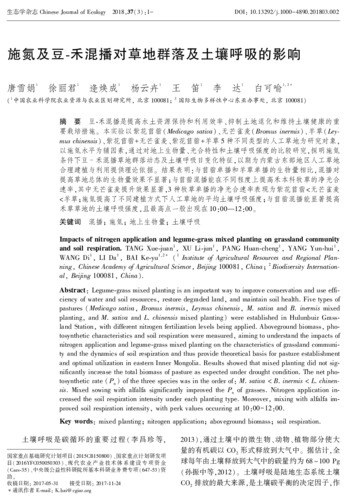施氮及豆⁃禾混播对草地群落及土壤呼吸的影响 [Impacts of nitrogen application and legume-grass mixed planting on grassland community and soil respiration]
Legume-grass mixed planting is an important way to improve conservation and use efficiency of water and soil resources, restore degraded land, and maintain soil health. Five types of pastures (Medicago sativa, Bromus inermis,-Leymus chinensis, M. sativa and B. inermis mixed planting, and M. sativa and L. chinensis mixed planting) were established in Hulunbuir Grassland Station, with different nitrogen fertilization levels being applied. Aboveground biomass,photosynthetic characteristics and soil respiration were measured, aiming to understand the impacts of nitrogen application and legume-grass mixed planting on the characteristics of grassland community and the dynamics of soil respiration and thus provide theoretical basis for pasture establishment and optimal utilization in eastern Inner Mongolia. Results showed that mixed planting did not significantly increase the total biomass of pasture as expected under drought condition. The net-photosynthetic rate (Pn) of the three species was in the order of:M.ativa <B. inermis<L. chinensis. Mixed sowing with alfalfa significantly improved the Pn of grasses. Nitrogen application increased the soil respiration intensity under each planting type. Moreover, mixing with alfalfa improved soil respiration intensity, with perk values occurring at 10:00-12:00.

